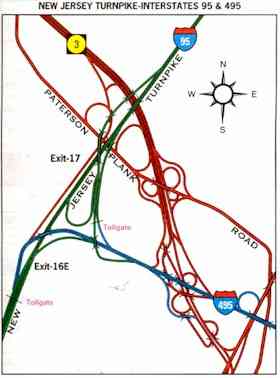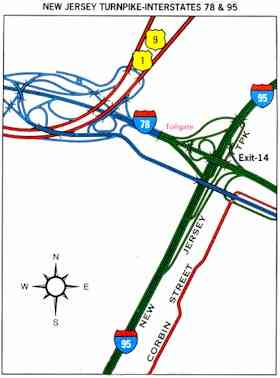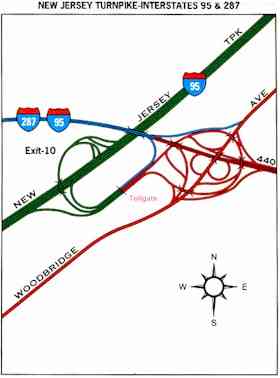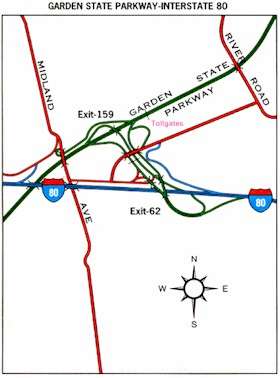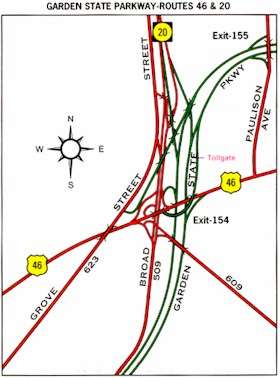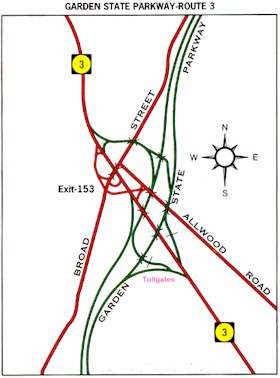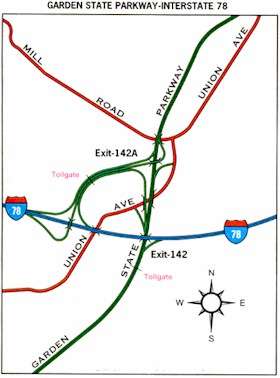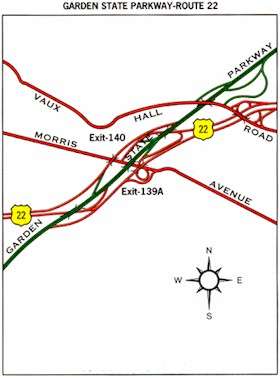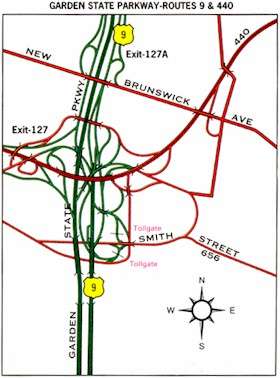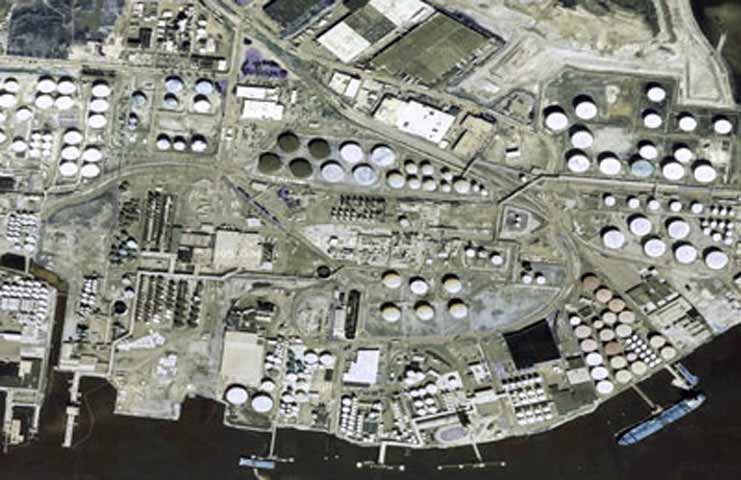Drive You Crazy
Complex Highway InterchangesMadonna is my role model - she's such a powerful woman. - Kirsten Dunst Take a drive on the New Jersey Turnpike (completed in 1952). It is the busiest road in the United States, and thousands of cars crowd onto it each day. It is also the country's widest road, bulging up to 12 lanes wide in some stretches. It was the first major highway to install guardrails along its entire length, preventing out-of-control vehicles from crossing the median strip and causing head-on collisions. Similar guardrails were soon adopted by other states, where they were called "Jersey Rails." Today, the state has more than 34,000 miles (55,000 km) of roadways. An average of almost 5,000 vehicles roll over each mile of highway each day. Source: New Jersey by R Conrad Stein 1998
Source: New Jersey State Road Atlas Hagstrom Map Company Incorporated 2001
What could I possibly add? New Jersey's freeways speak for themselves... See also:
The Other Thing New Jersey Is Noted for...
An enormous facility for fuel storage, transport, and refining. Previously operated by Exxon, this area located on East 22nd Street is also one big superfund site. Toxic wastes. This place really looks the part, and more than likely will never be cleaned up due to the costs involved. New Jersey is known as The Garden State. We used to call this a tank farm (perhaps they call it a tank garden?). Note the lack of any of the security apparatus that you find around prisons or military bases - no gate towers or limited access. Certainly there must be a fence? Source: sprol.com 6 June 2005
For more articles on New Jersey including facts, census data, complex highway interchanges, photos, transit plans, politicians, geology, canals, regions, governance, flora and
fauna click the "Up" button below to take you to the Table of Contents for this section. |
 Animals
Animals Animation
Animation Art of Playing Cards
Art of Playing Cards Drugs
Drugs Education
Education Environment
Environment Flying
Flying History
History Humour
Humour Immigration
Immigration Info/Tech
Info/Tech Intellectual/Entertaining
Intellectual/Entertaining Lifestyles
Lifestyles Men
Men Money/Politics/Law
Money/Politics/Law New Jersey
New Jersey Odds and Oddities
Odds and Oddities Older & Under
Older & Under Photography
Photography Prisons
Prisons Relationships
Relationships Science
Science Social/Cultural
Social/Cultural Terrorism
Terrorism Wellington
Wellington Working
Working Zero Return Investment
Zero Return Investment